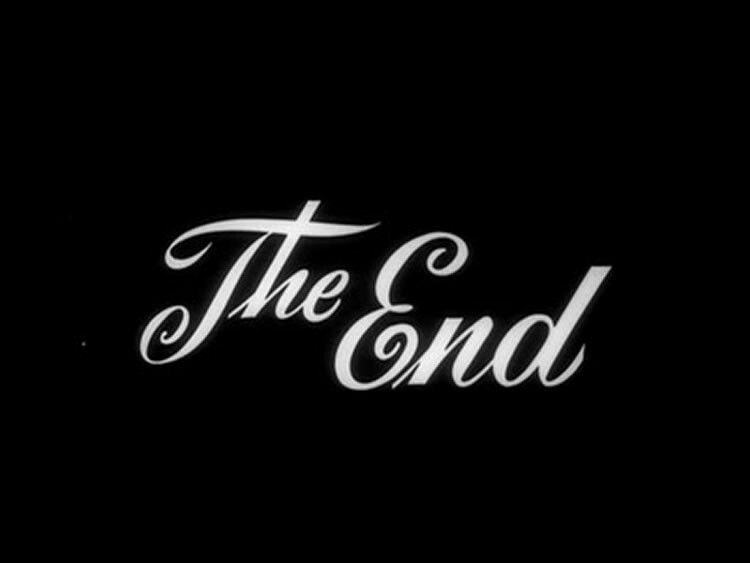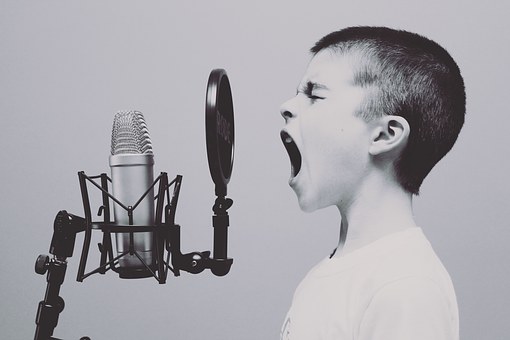|
Ending a song well in musical improv can make or break it. You can create an astounding melody, heartbreaking lyrics and beautiful choreography but if it fizzles out that’s often all the audience will remember. On the flipside, if you feel your song hasn’t gone that well, you can give it the old razzle dazzle showbiz ending and people will be on their feet.
There are tons of ways to end songs, for inspiration you can even turn to songwriting books and blogs but as improviser I am often asked how exactly do I initiate one of these endings? In this blog, Joe and I will break down some tools to create great song endings from both the singer and musical director’s point of view. Speed Heather says: Probably the most common and easy way to end a song is to change the speed. Slowing down is really recognisable and clear for the musician and rest of the cast to join and also gives an opportunity for that long held diva final note. For a high energy ambitious ending you could try speeding up too. Joe says: Yes a slow down will be the thing I am listening for most of all. I can initiate a slow down from the piano and it is hard not to follow that so it is my default option if nothing else is being signalled Volume Heather says: Remember the 1980s when all songs ended with a fadeout? Why not do the same for your improvised song, fade to a whisperer with movement or an exit to match. Again, bringing the volume up higher for a big finish is a great indicator that the song is building to its final crescendo. Joe says: So rarely used in improv but a delightful and often funny way to end a song. Can be hard to initiate, but using body language to get physically smaller can certainly help. Body Language Heather says: Body language is your best friend when it comes to ending songs. In a way, maybe not a separate category as it is needed for all these song endings to an extent. However clear movement can allow you to achieve an ambitious ending like a sudden stop if you’re sending clear signals. No need to look at your MD as they will have a close eye on you but experiment with ways of conducting or creating choreography that is comfortable for you and clear for the rest of the team. Joe says: I will be watching the chorus leader or the person singing near the end of a song like a hawk for any signs of conducting the end. This is really instinctive and you do not have to actually do predetermined signals or gestures, just be in your body and have an intention and that will show in how you are moving and what you are doing with your arms. Stage picture Heather says: Related to your body language, more specifically, can you initiate a stage picture that is a clear song ending? Some examples might be striding down the front of the stage, walking upstage and turning away, taking a knee or striking a pose. Ending with the stage picture you began with can also be a clear indicator or a neat trick in something like a dream sequence song. Joe says: Really nice to do this. It may still require a slow down or conducted ending but certainly a good way to show that the song is about to finish. Bookend Heather says: Ending in the way you started can be really fun if that section hasn’t appeared elsewhere in the song. Using the stage picture as mentioned above but also using the lyrics, melody, attitude or spoken dialogue can all work too. Joe says: Likewise this is a good way to signal that the end of the song is approaching and often that is all that is required. Repetition Heather says: Extremely common and really effective in both written and improvised songs is a repeat at the end. For songs with a chorus you can do as many repetitions as feels right, perhaps with other members of the cast joining, counterpoint melodies, maybe even a key change. Without a chorus, there is still the opportunity to repeat the main hook in the song or even the last line, second half or your line or a single word. Joe says: This is something that takes courage and boldness to pull off, especially if everyone is singing the chorus already but good eye contact and signalling your intent that something different is about to happen will mean that your team goes along with you Do Nothing! Heather says: If you’re reading this, chances are you are a musical improviser and the good news is you’re not still mid song so you did manage to end a song successfully, even if you don’t know how you did it! Listening, observing and being present with everyone onstage and your musician or band offstage is always number one. If you do this, you will find an ending together even if you’re not actively choosing to the end the song in any of the ways above (or the countless others not mentioned here) Joe says: Nothing wrong with doing nothing, but bear in mind that you are then handing responsibility for ending the song to your MD, which is fine, but don’t do it all the time! So, there you have it. A few ideas for ways to end songs and how to do it. Many of them shade into each other but pick what feels fun, experiment with what feels new and stay committed til that final note! Heather and Joe are available for online, remote and in person coaching, plus shows with The Maydays, Blues Hammer and the Concept. Get in touch to find out more and to tell us about more weird and wonderful ways you have ended your numbers.
1 Comment
Decantophobia, Adophobia, Psallophobia or even karaokephobia! Whatever you want to call it, fear of singing in public regularly comes up as humankind's worst nightmare. Why on Earth should this be the case? Singing is one of our most fundamental and ancient activities, surely pre-dating our evolution to Homo Sapiens some 30,000 years ago. Our history used to be handed down orally through folk song and wandering troupes would spread local news and recount heroic fables through song. Were they as afraid of singing as we are now? Did villagers and tribes-people look on with admiration and awe as they were sung to thinking "I could NEVER do that"? Perhaps as we have developed more anonymous means of communication, news feeds, social media etc. we have forgotten our ancient connection to our own voices. It would certainly help to explain the enormous adrenaline surge and feeling of accomplishment that I have witnessed from singing workshop attendees who have entered the room with the fear in their eyes and then transformed it into zeal. Clearly those who attend choirs and regular singing groups have reconnected to their past? Well often not, single out a member of a choir at random and ask them to make up a couple of lines of a song from a subject and that fear returns with a vengeance.
Our eyes may be the window to our souls but the voice seems to contain a version of ourselves that is raw and vulnerable and that we want to protect from scrutiny. It is this vulnerability that provides such a rich and challenging environment for people when they are allowed to practise and perform singing in front of other people. The applause that comes from those watching is half appreciation and half respect, perhaps with a smattering of relief that it was not them up there. It is the ultimate risk-taking in action without the need for a physical safety net. |
AuthorHeather Urquhart and Joe Samuel have over 15 years experience performing, teaching and writing about Musical Improv. Based in the UK they have facilitated workshops and graced stages around the world. Archives
November 2022
Categories
All
|


 RSS Feed
RSS Feed